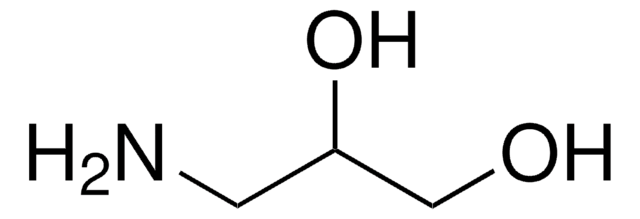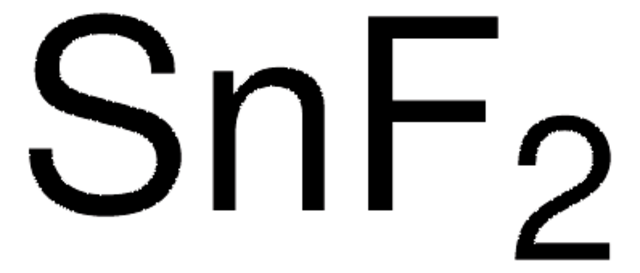14509
Tin
≥99%, powder
Sinónimos:
Sn
Iniciar sesiónpara Ver la Fijación de precios por contrato y de la organización
About This Item
Fórmula empírica (notación de Hill):
Sn
Número de CAS:
Peso molecular:
118.71
Número CE:
Número MDL:
Código UNSPSC:
12161600
ID de la sustancia en PubChem:
NACRES:
NA.22
Productos recomendados
Nivel de calidad
Ensayo
≥99%
Formulario
powder
idoneidad de la reacción
core: tin
reagent type: catalyst
resistividad
11 μΩ-cm, 20°C
bp
2270 °C (lit.)
mp
231.9 °C (lit.)
densidad
7.310 g/mL at 25 °C (lit.)
trazas de catión
Bi: ≤200 mg/kg
Cu: ≤100 mg/kg
Fe: ≤100 mg/kg
Pb: ≤500 mg/kg
Sb: ≤300 mg/kg
cadena SMILES
[Sn]
InChI
1S/Sn
Clave InChI
ATJFFYVFTNAWJD-UHFFFAOYSA-N
Categorías relacionadas
Aplicación
Tin has been used as a precursor for the synthesis of nano-tin oxide which can be deposited on aluminum substrate to be used as an urea sensor. It is generally used for the synthesis of Li/Sn alloys and tin-oxide based electrodes for lithium-ion secondary batteries.
Código de clase de almacenamiento
13 - Non Combustible Solids
Clase de riesgo para el agua (WGK)
WGK 3
Punto de inflamabilidad (°F)
Not applicable
Punto de inflamabilidad (°C)
Not applicable
Equipo de protección personal
dust mask type N95 (US), Eyeshields, Gloves
Elija entre una de las versiones más recientes:
¿Ya tiene este producto?
Encuentre la documentación para los productos que ha comprado recientemente en la Biblioteca de documentos.
Los clientes también vieron
Electrochemical enzyme-less urea sensor based on nano-tin oxide synthesized by hydrothermal technique.
Ansari SG, et al.
Chemico-Biological Interactions, 242, 45-49 (2015)
Microstructure and electrochemical properties of a nanometer-scale tin anode for lithium secondary batteries.
Choi E, et al.
Journal of Power Sources, 136(1), 154-159 (2004)
Particle size and multiphase effects on cycling stability using tin-based materials.
Pereira N, et al.
Solid State Ionics, 167(1-2), 29-40 (2004)
P Olmedo et al.
Environment international, 59, 63-72 (2013-06-25)
Although fish intake has potential health benefits, the presence of metal contamination in seafood has raised public health concerns. In this study, levels of mercury, cadmium, lead, tin and arsenic have been determined in fresh, canned and frozen fish and
Lun Li et al.
Journal of the American Chemical Society, 135(4), 1213-1216 (2013-01-15)
Single-layer single-crystalline SnSe nanosheet with four-atomic thickness of ~1.0 nm and lateral size of ~300 nm is presented here by using a one-pot synthetic method. It is found that 1,10-phenanthroline plays an important role in determining the morphology of the
Nuestro equipo de científicos tiene experiencia en todas las áreas de investigación: Ciencias de la vida, Ciencia de los materiales, Síntesis química, Cromatografía, Analítica y muchas otras.
Póngase en contacto con el Servicio técnico



